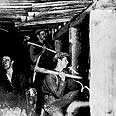All Articles
Legislative and Regulatory Update
May 2007 by Scott Harn
• Endangered Species Act update
New draft regulations appear to be in the works for the Endangered Species Act.
A draft document that was being worked on by the US Fish and Wildlife Service was leaked to several environmental groups, obviously by someone within the agency who has environmental leanings. The draft calls for greater influence by individual states, a recovery area limited to the current range of the species instead of the current historic range, and limiting the “foreseeable future” that a species may be at risk to 20 years from the 50-to-100 year span now.
The agency is calling it a discussion document at this stage.
An effort is still underway in Congress to revise the Endangered Species Act through legislation. Five Republican senators introduced Senate Bill 658. The bill would prevent the Fish and Wildlife Service from listing a species as threatened or endangered until after a recovery plan is written.
The last time a similar bill was issued Senator Blanche Lincoln (D-Arkansas) was listed as a cosponsor. He is not a cosponsor this time around. We do not believe this bill will make it out of the Senate now that Democrats are in control of the majority.
• California Fish & Game tries yet another route to stop gold dredgers
California Assemblywoman Lois Wolk (D-Davis) has introduced AB 1032, a bill that would block suction dredge mining in many state waterways. It would also take permit authority out of the hands of the Department of Fish and Game and place it under control of the Fish and Game Commission.
Fish and Game has been looking for a way to block suction dredge mining in the state following their recent defeat in court in the Karuk Tribe case. (See “Karuk Tribe case over, for now,” pg. 3, February 2007 issue of ICMJ’s Prospecting and Mining Journal).
The bill proposes to allow the Fish and Game Commission to close waters to dredging if “Heritage Trout” or other species deemed threatened are present. Dredgers would have to obtain a permit from the commission if they wish to dredge these waters.
The bill “would prohibit the commission from approving a permit unless it finds that the subject dredging operation will not be deleterious to certain species. The bill would authorize the department to close an area to dredging otherwise opened for dredging and for which a permit has been issued, without regard to water level, if the department determines that it is necessary to protect fish and wildlife resources, including wild trout stocks within designated heritage trout waters, and native aquatic or amphibian species listed by the commission as endangered or threatened under the California Endangered Species Act, or species identified by the department as species of special concern.”
In addition, the bill looks to create a two-tiered fee system. An extra $105 would be charged to a dredger who is a state resident, or $110 to an out-of-state dredger, “when the department deems that an onsite investigation is necessary.”
The bill ignores the fact that mining is a right, not a privilege, and that regulating the dredger out of the water amounts to a takings issue. Public Lands for the People (PLP), along with their attorney, are heading to Sacramento in an attempt to educate state lawmakers regarding this fact.
If AB 1032 passes, a lawsuit will be necessary to correct the situation and restore the rights of dredgers. Please see page 43 for information on how you can support PLP’s efforts on the behalf of miners.![]()
Small Miner Beats Forest Service in Court
Thomas Tierney has been a long-time subscriber to ICMJ’s Prospecting and Mining Journal and has read about the many battles between miners and overzealous regulators. Then he faced his own battle.
Hidden Treasure Mine—Foresthill Divide, California
 One of the greatest and richest underground placer mines of California was the Hidden Treasure Mine of Placer County.
One of the greatest and richest underground placer mines of California was the Hidden Treasure Mine of Placer County.
The Kern River Gold Rush
The tall grasses of the rolling foothills of eastern Kern County, California, hide traces of what was once a major gold rush.
Melman on Gold & Silver
From the point of view of the precious metals, an upside breakout would have clear inflationary implications, which should benefit...
Safety With a Tax Deduction
As an employer, every mining operation, large or small, is responsible for protecting the safety and health of its employees. Safety is also good business. An effective safety and health program can save $4 to $6 for every $1 invested. It’s the right thing to do, and doing it right pays off in lower costs, increased productivity, and higher employee morale.
Saved Before the Tax Bell Tolled
The owners of many prospecting, dredging and mining operations may be missing a number of newly extended and expanded tax breaks under the false impressions that they expired. Other tax breaks that may have been overlooked in the past have now been clarified thanks to the last-minute passage of a new tax law.
General Metals Continues Toward Production
Parent said that General Metals is moving toward initiating production at the earliest possible time. He noted that cooperation from Nevada regulatory authorities has been excellent...
Subscription Required:
The Bawl Mill
• Ask the Experts—Where can I find plans for a home-built suction dredge?
• Ask The Experts—Can you help explain the ratings in Melman On Gold & Silver?
• Recovering Values from Black Sands
• Typhoon Exploration—Junior Mining Company Moves Forward in Quebec
• Kalgoorlie, Australia—Born of Gold
• Colorado Court Rules on Cyanide Ban
• Selling Your Gold—Where To Start
• The Business of Mines—Consider Your Tax Deductions Now
• Exploration, Development and Taxes
• US v. Donald Eno—IBLA Rules in Favor of Miner
• Miners Clean Washington Rivers and Streams
• Melman on Gold & Silver
• Mining Stock Quotes, Mineral & Metal Prices
• Looking Back
Free:








